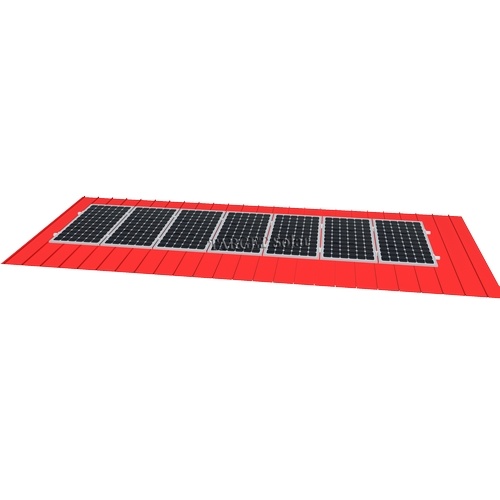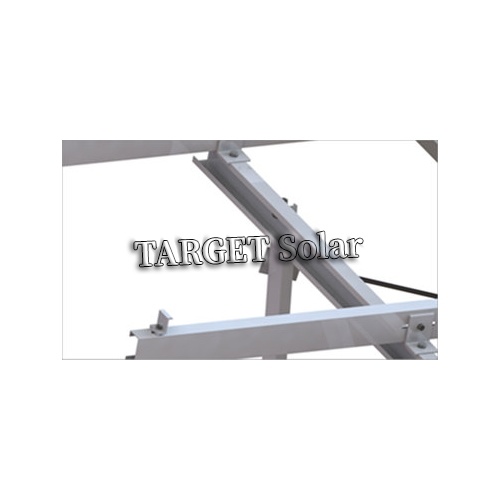Release Time: May 01,2025
Understanding Ground-Mounted Photovoltaic Power Stations: A Sustainable Energy Solution
Ground-mounted photovoltaic power stations are an essential component of the renewable energy sector, particularly in the realm of solar energy. These systems consist of solar panels that are installed on the ground rather than on rooftops or other structures. This configuration allows for larger installations, making them suitable for utility-scale energy production.
One of the primary advantages
Ground-mounted photovoltaic power stations are an essential component of the renewable energy sector, particularly in the realm of solar energy. These systems consist of solar panels that are installed on the ground rather than on rooftops or other structures. This configuration allows for larger installations, making them suitable for utility-scale energy production.
One of the primary advantages of ground-mounted photovoltaic power stations is their ability to generate substantial amounts of electricity. Since they can be installed in open spaces, these systems can utilize a larger solar panel area, thereby capturing more sunlight throughout the day. This is especially beneficial in regions with high solar irradiance, where the potential for energy generation is maximized.
In addition to their size advantage, ground-mounted systems can be designed to incorporate tracking technology. Solar trackers allow panels to follow the sun’s path, optimizing the angle of sunlight exposure and significantly increasing energy output. By adjusting to the sun's position, these systems can enhance efficiency compared to fixed installations.
Moreover, ground-mounted photovoltaic power stations can be sited on degraded lands or areas unsuitable for agriculture, thus not competing with food production. This is an important consideration in the context of land use, where finding a balance between renewable energy development and agricultural needs is crucial. Additionally, they can be combined with other land uses, such as sheep grazing, allowing for dual land productivity.
Environmental benefits are another key aspect of ground-mounted photovoltaic power stations. By converting sunlight into electricity, these systems contribute to reducing greenhouse gas emissions and dependence on fossil fuels. As the world moves towards a more sustainable future, solar power plays a pivotal role in mitigating climate change and promoting clean energy solutions.
It is important to note that the installation of ground-mounted photovoltaic power stations requires thorough planning. Factors such as site selection, environmental impact assessments, and local regulations must be considered to ensure sustainable development. Engaging with local communities and stakeholders can facilitate the successful implementation of these projects.
In summary, ground-mounted photovoltaic power stations are a vital part of the renewable energy landscape, offering significant advantages in energy production, land use optimization, and environmental protection. As technology advances and the push for clean energy continues, these systems will likely play an increasingly important role in meeting global energy demands sustainably.
One of the primary advantages of ground-mounted photovoltaic power stations is their ability to generate substantial amounts of electricity. Since they can be installed in open spaces, these systems can utilize a larger solar panel area, thereby capturing more sunlight throughout the day. This is especially beneficial in regions with high solar irradiance, where the potential for energy generation is maximized.
In addition to their size advantage, ground-mounted systems can be designed to incorporate tracking technology. Solar trackers allow panels to follow the sun’s path, optimizing the angle of sunlight exposure and significantly increasing energy output. By adjusting to the sun's position, these systems can enhance efficiency compared to fixed installations.
Moreover, ground-mounted photovoltaic power stations can be sited on degraded lands or areas unsuitable for agriculture, thus not competing with food production. This is an important consideration in the context of land use, where finding a balance between renewable energy development and agricultural needs is crucial. Additionally, they can be combined with other land uses, such as sheep grazing, allowing for dual land productivity.
Environmental benefits are another key aspect of ground-mounted photovoltaic power stations. By converting sunlight into electricity, these systems contribute to reducing greenhouse gas emissions and dependence on fossil fuels. As the world moves towards a more sustainable future, solar power plays a pivotal role in mitigating climate change and promoting clean energy solutions.
It is important to note that the installation of ground-mounted photovoltaic power stations requires thorough planning. Factors such as site selection, environmental impact assessments, and local regulations must be considered to ensure sustainable development. Engaging with local communities and stakeholders can facilitate the successful implementation of these projects.
In summary, ground-mounted photovoltaic power stations are a vital part of the renewable energy landscape, offering significant advantages in energy production, land use optimization, and environmental protection. As technology advances and the push for clean energy continues, these systems will likely play an increasingly important role in meeting global energy demands sustainably.
Related News
May 07,2025
Exploring the Durability of Color Steel Tile Roof Photovoltaic Brackets: A Comprehensive Guide
Exploring the Durability of Color Steel Tile Roof Photovoltaic Brackets
Table of Contents
1. Introduction to Color Steel Tile Roof Photovoltaic Brackets
2. Understanding the Materials Used in Photovoltaic Brackets
3. Key Factors Influencing Durability
3.1. Corrosion Resistance
3.2. Weather Resistance
3.3. Structural Integrity
4. Installation Best Practices for
May 01,2025
Understanding Ground-Mounted Photovoltaic Power Stations: A Sustainable Energy Solution
Ground-mounted photovoltaic power stations are an essential component of the renewable energy sector, particularly in the realm of solar energy. These systems consist of solar panels that are installed on the ground rather than on rooftops or other structures. This configuration allows for larger installations, making them suitable for utility-scale energy production.
One of the primary advantages
Apr 27,2025
Ground Photovoltaic Station Supports: Key Factors for Optimal Performance
Ground Photovoltaic Station Supports: Key Factors for Optimal Performance
Table of Contents
Introduction to Ground Photovoltaic Station Supports
The Importance of Quality Supports in Solar Installations
Types of Ground Photovoltaic Supports
Design Considerations for Optimal Performance
Material Selection: Choosing the Right Supports
Best Practices for Installation Techniques
Maintenance Strategie







